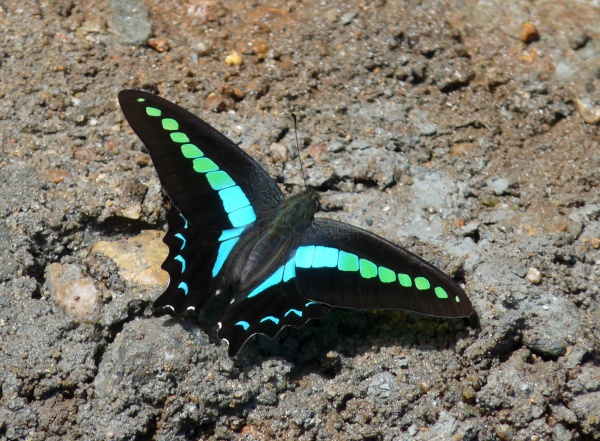Facts About Graphium sarpedon
Graphium sarpedon, widely known as the common bluebottle or blue triangle in Australia, is an enchanting swallowtail butterfly distributed across South and Southeast Asia, as well as eastern Australia. Encompassing around sixteen subspecies, each possesses its own distinct geographical range.
The common bluebottle is visually striking, characterized by opaque black upper wings embellished with a broad, pale blue band, while the lower wings are a rich brown adorned with distinctive markings. Male butterflies can be distinguished by a tuft of white hairs on their abdomen.
These butterflies typically thrive in moist, lowland rainforests but have also adapted to the drier subtropical areas of eastern Australia. The larvae of the common bluebottle feed on trees from the laurel family, including the cinnamon tree. As adults, they are known for their rapid flight and can often be seen feeding at puddles or sipping nectar from flowering plants.
The distribution of the common bluebottle's subspecies spans various regions, including India, Sri Lanka, China, Japan, Indonesia, Australia, and numerous islands. Notably, in South India, they are observed as migrants and are known to gather around muddy puddles during migration. The larvae have a diverse diet, including plants such as the cinnamon bark tree and Indian laurel.
The life cycle of the common bluebottle begins with eggs laid on host plants. The resulting larvae are green with spines, eventually developing into green pupae with visible wing cases. These butterflies are challenging to catch due to their swift flight and keen reactions.
For those interested in further study, several detailed publications explore the butterflies of India and the Sikkim Himalaya region, offering extensive information on these fascinating insects.

 India
India